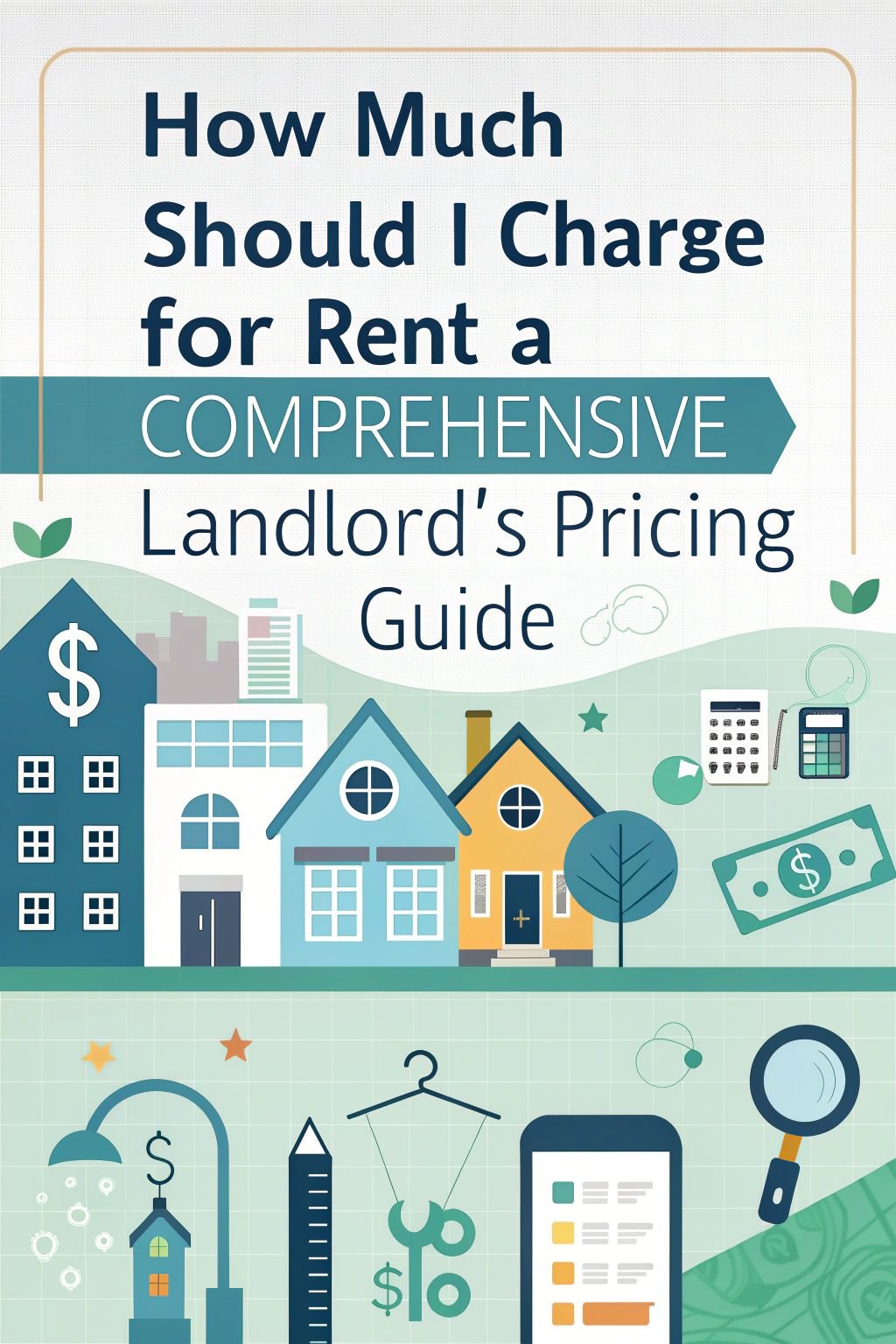Are you a landlord trying to figure out how much to charge for rent? Setting the right rental price is crucial for covering your property costs, making a profit, and attracting good tenants.
But with so many factors to consider, it can feel overwhelming to land on the perfect number.
Did you know the average asking rent in the US is around $1,900 per month? Of course, this varies a lot depending on where your property is located. This comprehensive guide will walk you through everything you need to know to confidently set your rental rate.
From using the 1% rule to analyzing market trends and factoring in property features, you’ll have all the tools to price your rental just right. Ready to become a rent-setting pro?
Key Takeaways
- Setting the right rental price is crucial for landlords to cover property costs, make a profit, and attract good tenants. The average asking rent in the US is around $1,900 per month, but this varies depending on the property’s location. Landlords can use the 1% rule (monthly rent should be 1% of the property’s value) and 2% rule (monthly rent should be 1-2% of the purchase price) as starting points for determining rent.
- Analyzing comparable properties, examining property characteristics and amenities, understanding local rent control laws, considering seasonality and market demand, and assessing financial needs and expenses are essential factors in setting rent accurately. Online tools like Zillow Rent Estimate, Rentometer, RentRange, and property management software can help determine appropriate rent prices.
- To calculate rent accurately, landlords can apply the 1% rule, use the price per square foot method (monthly rent divided by total square footage), and utilize online rent estimation tools like Zillow Rental Manager and Rentometer Pro. These tools provide insights into local market trends and help set competitive rental rates.
- Strategies for adjusting rent include keeping up with market trends by regularly analyzing comparable properties, implementing periodic rent increases of 2-5% while complying with local rent control laws and providing ample notice to tenants, and offering rent concessions such as free rent for the first month or waiving certain fees to attract tenants and boost occupancy rates.

1. How do I determine how much rent to charge for my property?
To calculate the right rental rate, consider factors like the national average rent, demand for rental properties in your area, and local rent control laws. You may also want to consult with a property manager or review comparable rental rates for similar properties nearby.
2. Can I charge whatever rental rate I want for my investment property?
While you have some flexibility in setting a rental rate, you can’t necessarily choose any price you desire. States have rent control regulations that limit how much you can charge in rent and how much you can increase the rent over time.
3. Should I charge rent solely based on my mortgage payment?
No, deciding what to charge for rent should involve more than just covering your mortgage. You’ll need to factor in other expenses like property taxes, insurance, maintenance costs, and the going rate for similar rentals in your area.
4. What if I want to charge less rent than what’s typical in my area?
As a landlord, you may want to charge less than the average rent in your area to attract tenants or for personal reasons. However, keep in mind that your rental income could affect your ability to cover property expenses and earn a profit.
5. How does the amount of rent I charge impact my ability to find tenants?
The rent you charge your tenants plays a significant role in attracting renters. If you charge too much, you may struggle to find tenants to rent your home. On the other hand, if your rental rate is too low, potential tenants may question the quality or condition of your property.
6. What else should I consider when setting a rental rate?
In addition to the factors already mentioned, consider the amenities and unique features of your property, the condition of your rental, and your target renter demographic. It’s also wise to budget for vacancies and have a plan for late or missed rent payments. Setting the right rental rate is key to successfully managing a profitable rental property.
References
- https://www.rentalpropertypros.com/how-much-should-i-charge-for-rent-a-guide-to-setting-the-right-rental-price/ (2024-04-10)
- https://theclose.com/how-much-you-should-charge-for-rent/
- https://www.rwmaryland.com/blog/setting-the-perfect-rent-price-through-analyzing-rental-market-trends (2024-09-24)
- https://www.rentseattle.com/blog/analyzing-local-rental-market-trends-setting-the-perfect-rent-price
- https://www.sciencedirect.com/science/article/pii/S1051137724000020
- https://www.mysmartmove.com/blog/how-much-charge-for-rent
- https://smartasset.com/mortgage/how-much-you-should-charge-for-rent (2024-09-19)
- https://www.investopedia.com/terms/o/one-percent-rule.asp
- https://www.mashvisor.com/blog/rental-rate-calculator/
- https://www.rwmaryland.com/blog/using-online-rental-tools-simplifying-rent-estimation (2024-10-22)
- https://www.biggerpockets.com/blog/how-much-to-charge-for-rent (2023-09-21)
- https://www.rpoaonline.org/page/kb-mastering-rent-increases-a-landlords-guide
- https://www.rentana.io/blog/rent-concession



















